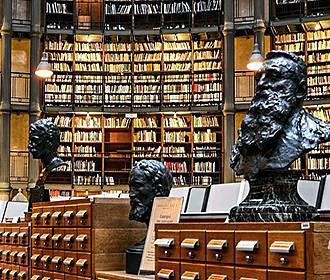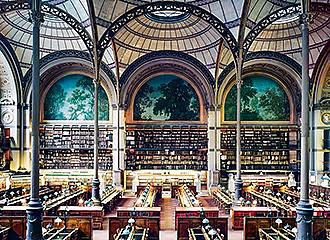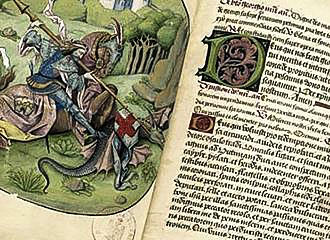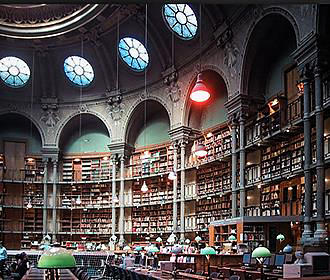Paris Bibliotheque National de France History or the BNF
This is the national library of France, but has only been called the Bibliotheque National de France since 1994, yet has a rich history starting with the collection of royal books that was put together during the reign of King Charles V.
The beginnings of the royal library
It was in the 1300s during the reign of King Charles V that a special room was fitted out in his palace to house a collection of approximately 900 books, and this meant the start of the national library, as from then on, each king decided to compile their own library of books.
However, King Francois I decided to introduce a rule whereby all printers and booksellers had to deposit any new book within the library of the Chateau Blois and this became an official order on 28th December 1537.
This obligation was to become known as a legal deposit and hence began the start of the major collections of the royal library, which were then brought back to Paris in the second half of the 16th century.
The legal deposit and the growth of the royal library
Yet it was from 1666 under the direction of Jean-Baptiste Colbert that the library grew substantially and was set up in the same area that the Bibliotheque National de France Bibliotheque Richelieu-Louvois is in today, which was when the Louvre Palace was no longer adequate to store the books.
It was Jean Baptiste Colbert who increased the collections immensely with acquisitions from private libraries and the purchase of numerous books from private collections, and it became the largest library in Europe.
The next major step for the national library of France was when Abbe Jean-Paul Bignon was appointed the librarian for the king in 1719 and he organised it into several different departments. Plus he continued the work of obtaining new acquisitions of books for this royal library, as one of his ambitions was to not only have a copy of all works by European scholars, but to also provide access to these for scholars.
The Royal Library during and after the French Revolution
During the French Revolution the legal deposit system was abolished for three years, yet during this time, it went from being the royal library to the national library and was enriched dramatically with the confiscation of private libraries from churches and individuals including those of King Louis XVI and Marie Antoinette.
However, due to the immense number of books that had been confiscated, a lack of space was even more obvious and so, in 1858 a report was drawn up to make changes, including construct a building to house what was then to be known as the Imperial Library under the reign of Napoleon III.
But it was not until after the bequest by Victor Hugo in 1881, which encouraged the administration to restart the policy of gaining additional acquisitions including those in the field of literary manuscripts and this continued right through the 1900s, with different annexes to the national library being added, along with numerous reading rooms.
The national library in the 1900s through to the Bibliotheque National de France (BNF)
Over the years there has been a massive increase in the amount of items added to the national library, and some of these reasons are due to different mediums with the increase in technology, like audio materials.
In addition to this, the printed production from the legal deposit has also grown substantially from approximately 12,400 in 1880 to over 45,000 in 1993, and all of these issues have made it difficult for preservation, but also for making items accessible to the public and researchers.
Yet with computer technology and the progress in telecommunications, more is accessible to the individual including remotely, and by 1988 the need had become even greater for a new national library and this is when it became known as the Bibliotheque National de France.
The French President, Francois Mitterrand made an announcement on the 14th July 1988, during his yearly speech and interview that is held within the Champs Elysees Gardens, stating that a new modern library would be constructed in Paris, which would be one of the largest and most modern libraries in the world.
The site eventually selected for the new library was in the 13th Arrondissement right by the River Seine and in the August of 1989 an announcement was made that the architect Dominque Perrault had been chosen for the project.
Eventually on 20th December 1996, the reference library of the Bibliotheque Francois-Mitterrand was finally opened, followed by the research library on the 8th October 1998, which marked the finalisation of the grand project for the new Bibliotheque National de France.
However, the Bibliotheque National de France continues to expand and provide even more forms of media and documentation available, like Bibliotheque Arsenal and Bibliotheque Francois-Mitterrand that have temporary exhibitions, but other libraries in Paris have permanent exhibitions and museums at like the Bibliotheque Richelieu-Louvois as well.



